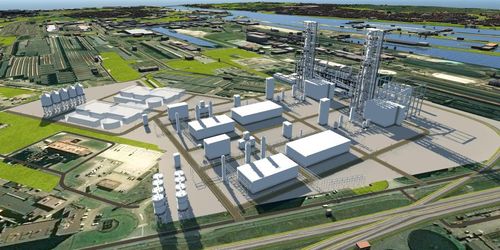Tata Steel Nederland has signed contracts with three companies – McDermott, Danieli and Hatch – to advance technical preparations for green steel production.
This phase in the project is expected to cost over 65m euros, and will result in an engineering package that forms the basis for final permitting and project planning, according to a press release.
Tata Steel wants to move to green steel manufacturing in a clean environment as fast as possible, with each of the three partner companies bringing their own specific expertise to help Tata shape and deliver hydrogen-based steel manufacturing.
The project is led by the Tata Steel internal project and sustainability team, in close support of the main delivery partners. McDermott is responsible for the construction input and support of the technical project management. Danieli is responsible for the engineering design for the plant and technology that delivers the Direct Reduced Iron (DRI), the first step in the iron making process. Hatch is the technology licensor of the electric furnaces (REF) that melt the DRI and help to reduce the oxygen content further thereby improving the final steel quality. The REF and DRI plant are closely coupled to form an integrated production system.
“We recently signed agreements about our future with two ministries and the province of North Holland. In doing so, we have committed to being CO2 neutral before 2045 and emit between 35 to 40% less CO2 before 2030. This will primarily be achieved via the hydrogen route where the blast furnaces are replaced with modern clean steel making technology that uses hydrogen or gas instead of coal,” said Hans van den Berg, CEO of Tata Steel Nederland in a statement.
DRI (direct reduced iron) technology is a relatively new production technology, in which iron ores are directly reduced using natural gas or hydrogen, rather than coal. The reduction of iron ores takes place in a DRI plant in a shaft reactor at a relatively low temperature of up to about 1000°C. The reduced iron is then further processed into hot metal in an electric furnace (REF). During this step the right amount of carbon is being added to create a very precise and high quality feedstock for our steel plant.
The DRI-REF technology offers several advantages. By using green electricity and a predominant hydrogen stream, the CO2 emissions from the process are much lower than when using blast furnaces. The new process can also accommodate higher percentages of circular steel, where scrap can be added to the REFs or the induction furnaces.






